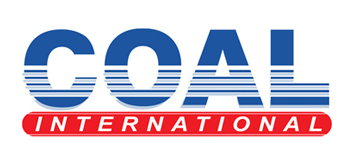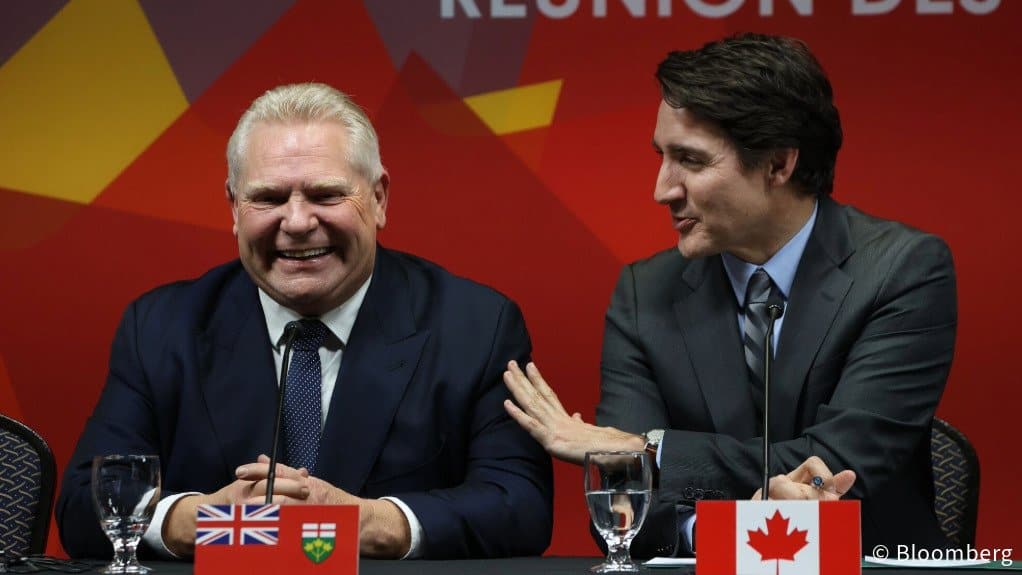The leaders of all Canadian provinces and territories are set to meet up in the US capital Wednesday to take their arguments against tariffs to American lawmakers, business groups and labor leaders.
For the first time ever, they’re all in Washington together, trying to bend the ears of the most influential American policymakers they can find. Their message: Do business with us and we’ll help you compete against China.
Ontario Premier Doug Ford said Tuesday he believes there’s opposition in the US to Trump’s tariff plans, which include 25% charges on almost everything the country buys from Canada and Mexico. But few will say it openly.
“Over the last few months, I’ve met and spoken with senators, congressmen and women, governors from every region of America, and from both sides of the aisle, and I’ll tell you what they say — they won’t say it publicly — they say ‘This is the craziest thing I’ve ever heard,’” said Ford.
Premiers in Canada are akin to US state governors. They span a wide political spectrum and govern vastly different economies, from the remote Arctic to the bustling trade corridors of southern Ontario. But all are united in their opposition to Trump’s threat to impose duties that would disrupt supply chains in the integrated North American economy.
The trip comes at a delicate moment for US-Canada relations. Prime Minister Justin Trudeau is entering his final weeks on the job, while much of the country fumes over President Donald Trump’s stated desire to use “economic force” to turn Canada into a US state.
Trudeau announced his resignation on January 6, but won’t leave office until after the conclusion of a vote to replace him on March 9. That has opened up a bigger role for politicians like British Columbia Premier David Eby, who won a provincial election in October, and Ford, who’s currently campaigning for a third term.
Yet for all their efforts, the Canadian leaders conceded it’s possible they don’t actually get to Trump’s inner circle.
At a press conference at Vancouver’s airport late Monday — rearranged at the last minute so he could fly before a storm hit the eastern US — Eby said critical meetings might not be confirmed until the same day.
“Things are very fluid right now in Washington, DC,” he said. “We are trying hard to get those meetings, and I can assure you that we do have meetings set up with a number of senior decision-makers in government, but those closest to the president will be confirmed at the last minute — if we do get those meetings.”
CHINA ‘LAUGHING’
Ahead of conversations with Republican lawmakers, Ontario’s premier gave a speech about his preferred strategy — a plan he dubs “Fortress Am-Can” that would closely align Canada with the US on national security and resources, restrict Chinese investment and match US tariffs on Chinese goods.
Canada already applies tariffs on some Chinese-made items, such as electric vehicles, that are similar to US duties.
Ford told the US Chamber of Commerce he agrees with US lawmakers that China “is hijacking global supply chains,” adding that “America has had enough. American workers have had enough. And I’ve had enough.”
“I’ve yet to meet one CEO — and I’ve talked to endless CEOs — say ‘Let’s go after Canada’.” He added: “I’ll tell you who’s sitting back and laughing, is China.”
So far, Canadian politicians have had limited success deterring Trump from his path, despite numerous conversations with the president or people close to him, such as Howard Lutnick, his choice for commerce secretary.
Trudeau flew down to Mar-a-Lago to meet with Trump, Lutnick and others in late November, days after Trump issued his first specific threat of 25% tariffs against Canada. The conservative leader of oil-rich Alberta, Danielle Smith, went to Trump’s Florida club in January, then to Washington for inauguration day. And in December, Yukon Premier Ranj Pillai even flew to North Carolina to lobby the president’s eldest son, Donald Trump Jr., during a hunting trip.
Trump signed an executive order on February 1 to impose 25% tariffs on most of what Canada sells to the US, with a smaller 10% tariff on oil and other energy-related products. Canada announced retaliation the same day that included 25% counter-tariffs on many US-made items.
Canada pledged more border agents, equipment and intelligence investments to address US security complaints and both sides agreed to hold off for a month. But seven days after that truce, Trump signed another order placing 25% tariffs on all imported steel and aluminum — much of which comes from Canada.
“I was disappointed,” Ford said. “President Trump said ‘Hey, you have 30 days, let’s work it out,’ and bingo, a couple days later he wakes up and the world’s changed, the goalposts changed.”
Trump’s executive orders justify emergency tariffs on Canada and Mexico due to the trafficking of the deadly opioid fentanyl over US borders. But his complaints about Canada have also included the US trade deficit — incurred by buying oil, auto parts and lumber he has said the US doesn’t need — which, alongside low Canadian defense spending, he deems a subsidy. More recently, he’s said there’s insufficient market access for US banks, too.
Trade adviser Eric Miller of Rideau Potomac Strategy Group, speaking to reporters Tuesday, said he believed President Trump would need to “touch the hot stove” and see stock prices fall, vehicle plants close, or Americans paying more for goods before he backs off on tariffs.



